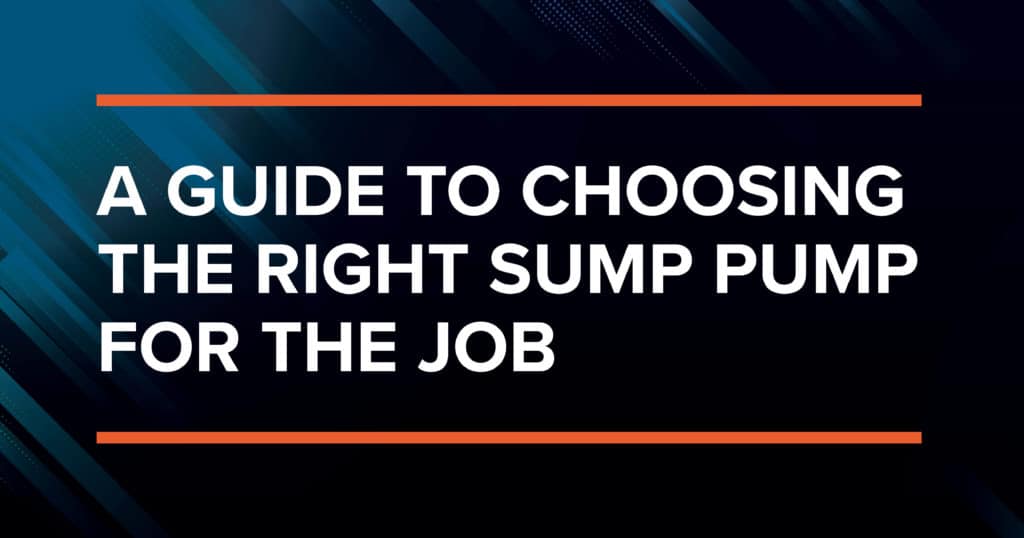There are many types of sump pumps on the market, but they all have one thing in common: they’re designed to efficiently remove accumulated water from basins. Homeowners can install sump pumps in their basements to remove excess rain or groundwater that seeps in, while industrial operations select sump pumps when dewatering is necessary.
Submersible pumps and sump basin designs vary depending on the application. A proper sump pump will automatically recognize excess water in the basin and pump it to a discharge pond. The discharge line is also known as an effluent. Of course, where water is discharged is almost as important as how it’s removed from the basin. Always follow local construction and environmental codes or risk fines and shutdowns.
The two primary styles of sump pumps:
- Submersible Sump Pumps
A submersible sump pump contains the pump and the motor in one unit. They sit completely submerged in the sump basin for continuous performance. They require careful maintenance—being underwater continuously can result in natural wear and tear. BJM Pumps is a leading manufacturer of submersible pumps. Check out their full lineup of submersible pumps suited for various dewatering applications.
- Pedestal Sump Pumps
A pedestal sump pump features a separated motor and pump configuration. The motor sits on a pedestal outside the basin, with an input hose running to the pump inside the basin. Because the motor is not submerged, a pedestal sump pump can offer a longer operational lifespan. Plus, maintenance is typically less complicated. However, pedestal sump pumps are louder to operate and can develop clogs in the connecting lines.
Backup Systems
When looking for ways to protect your home or plant from flood damage, a smart solution is a backup system, which provides backup power in the case of flooding or storm damage. Battery-operated backup systems work when electricity is unavailable, while water-powered backup systems work when water pressure is naturally increased.
Pump Switches
Switch systems are often used in conjunction with sump pumps, allowing the pump to be turned on independently. There are numerous types of switches:
• Float Switch—A float sits on the water surface and triggers the pump to turn on when the water reaches a certain level.
• Pressure Switch—A pressure switch automatically senses water pressure increases to control the pump operation.
• Diaphragm Switch—Diaphragm switches are common because of their dependability and long lifespan. They use a diaphragm system that flips from concave to convex as the water levels rise and fall.
• Electronic Switch—This is a sophisticated switch system that uses sensors to monitor water pressure and send electronic signals that control sump pump operation.
Choosing the Right Sump Pump
Like with any pump application, it’s critical to choose the appropriate sump or dewatering pump for your operation. It’s important to consider if your plant processes slurries, sediments, or other materials that require specialized pump materials and operation. Also consider operating features like flow rates, horsepower, and maintenance requirements.
Cortech DXP is here to help you select and configure the ideal sump pump for your home or industrial operation. We represent the top sump pump manufacturers, including BJM Pumps. Let us know what you need and we’ll guide you to the ideal sump pump for the best possible performance.

